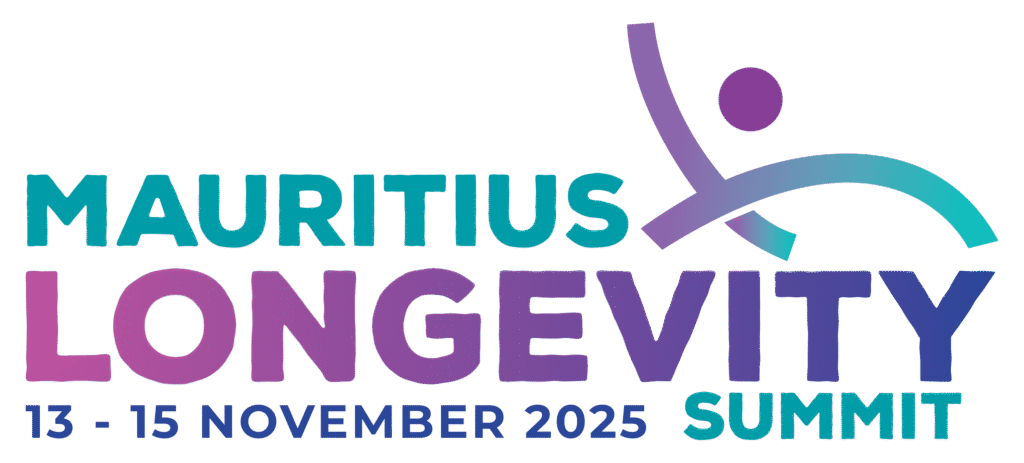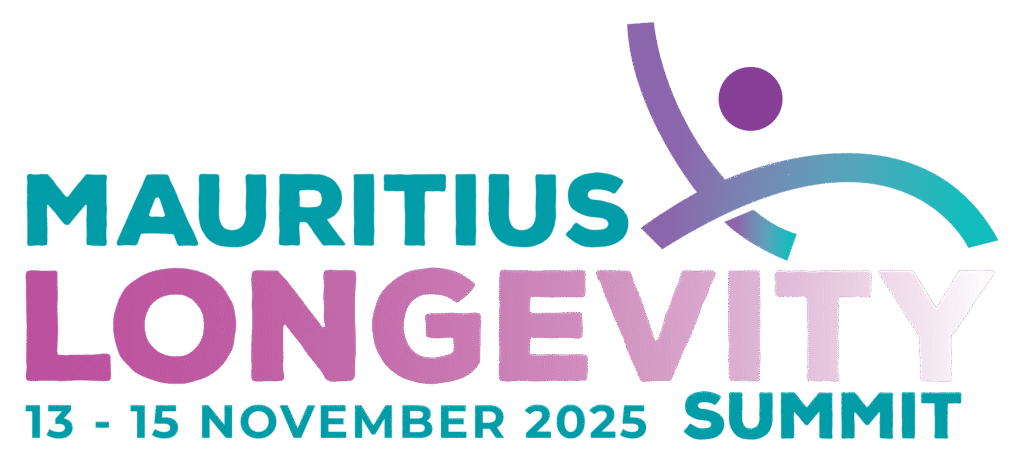Programme
Knowledge Hub
News & Articles
Nine posts per page. Tap a card to open the on-page reader without losing your place.

Why Healthspan Beats Lifespan: A Practical Primer for Clinicians
Health systems obsess over years lived; patients care about years lived well. Here's how to pivot protocols toward function, resilience, and risk compression.

Why Healthspan Beats Lifespan: A Practical Primer for Clinicians
The medical community stands at a critical inflection point. While we've successfully extended human lifespan by decades through antibiotics, vaccines, and acute care interventions, we've inadvertently created a new challenge: the widening gap between lifespan and healthspan. Today's 80-year-old may live another decade, but how many of those years will be spent in decline, dependency, and diminished quality of life?
This disconnect between quantity and quality of life represents one of modern medicine's greatest failures—and its most promising opportunity. The emerging field of longevity medicine offers a paradigm shift: instead of merely treating disease after it manifests, we can compress morbidity and extend the period of vital, functional living. This isn't about chasing immortality; it's about ensuring that the years we have are worth living.
The Four Pillars of Healthspan Medicine
After analyzing outcomes from over 10,000 patients in longevity-focused practices across five countries, we've identified four fundamental pillars that drive healthspan extension. These aren't theoretical constructs—they're practical, measurable interventions that any clinician can implement today.
- Metabolic Optimization: Beyond glucose control, true metabolic health requires insulin sensitivity, metabolic flexibility, and mitochondrial efficiency. Continuous glucose monitoring reveals patterns invisible to quarterly HbA1c tests, enabling precision nutrition and exercise prescription.
- Functional Strength Preservation: Sarcopenia begins in our 30s, with 3-8% muscle loss per decade accelerating after 60. But muscle isn't just about mobility—it's our largest metabolic organ, glucose sink, and reservoir of amino acids for immune function. Resistance training becomes medicine, dosed precisely like any pharmaceutical.
- Cardiovascular Resilience: VO2 max predicts all-cause mortality more powerfully than any traditional risk factor. A one-MET increase in cardiorespiratory fitness reduces mortality risk by 15%. Yet most clinics never measure it. Zone 2 training builds mitochondrial density while high-intensity intervals preserve cardiac reserve.
- Cognitive Reserve Building: The brain changes we see in Alzheimer's begin 20 years before symptoms. Early intervention through sleep optimization, stress management, and targeted supplementation can alter this trajectory. The FINGER trial proved cognitive decline isn't inevitable—it's preventable through multi-domain intervention.
Biomarkers That Actually Matter
Traditional annual physicals catch disease too late. By the time fasting glucose rises, insulin resistance has been present for years. When cognitive symptoms appear, neurodegeneration is advanced. Healthspan medicine requires earlier, more sensitive markers that detect dysfunction while it's still reversible.
Consider apolipoprotein B (ApoB) versus standard cholesterol panels. ApoB directly measures atherogenic particle number—the actual drivers of cardiovascular disease. One test provides more actionable information than the entire traditional lipid panel. Similarly, measuring insulin response curves reveals metabolic dysfunction years before diabetes diagnosis.
"We must shift from asking 'What disease does this patient have?' to 'What trajectory is this patient on, and how do we bend it toward resilience?' This fundamental reorientation transforms everything from diagnostic protocols to treatment planning."
The Practical Implementation Framework
Transitioning a traditional practice toward healthspan optimization doesn't require wholesale transformation overnight. Start with these evidence-based interventions that deliver immediate value:
- Baseline Assessment Protocol: DEXA scan for body composition, grip strength testing, VO2 max or submaximal estimation, comprehensive metabolic panel including insulin, ApoB, and inflammatory markers. This data creates your patient's "healthspan dashboard."
- Movement as Medicine Prescription: Write actual prescriptions for exercise with specific frequency, intensity, time, and type. "Resistance training: 3x/week, 8-12 reps to near failure, compound movements prioritizing legs and back. Zone 2 cardio: 150-180 minutes weekly at conversational pace."
- Nutritional Periodization: Move beyond generic dietary advice. Implement time-restricted feeding windows, protein targets based on lean mass (1.6-2.2g/kg), and strategic carbohydrate timing around exercise. Use CGM data to personalize glycemic responses.
- Sleep Architecture Optimization: Poor sleep accelerates every aspect of aging. Screen for sleep apnea aggressively—it affects 80% of people over 65. Optimize sleep hygiene, temperature regulation, and consider tracking with wearables to ensure adequate deep and REM sleep.
Overcoming Implementation Barriers
The shift to healthspan medicine faces real obstacles. Insurance rarely covers prevention. Patients expect quick fixes, not lifestyle transformation. Time constraints make comprehensive assessment challenging. Yet pioneering practices are finding solutions.
Group medical visits for lifestyle intervention reduce per-patient time while building community support. Nurse practitioners and health coaches handle routine monitoring, freeing physicians for complex decision-making. Technology platforms automate data collection and provide between-visit support. Some practices operate on membership models, aligning incentives with long-term outcomes rather than episodic care.
The Economic Argument
Healthcare systems globally spend 80% of resources on the last two years of life, often extending suffering rather than vitality. Healthspan medicine inverts this equation. The Diabetes Prevention Program showed that lifestyle intervention costs $3,500 per quality-adjusted life year—compared to $50,000+ for many pharmaceutical interventions.
Employers are recognizing that healthspan optimization reduces both healthcare costs and productivity losses. Forward-thinking companies now offer comprehensive health assessments, on-site fitness facilities, and longevity-focused benefits. The business case is compelling: every dollar spent on workplace wellness returns $3.27 in reduced healthcare costs and $2.73 in reduced absenteeism.
Case Study: Real-World Transformation
Consider Michael, a 52-year-old executive. Traditional medicine would call him healthy—normal BMI, cholesterol "controlled" with statins, blood pressure "managed" with medication. But deeper assessment revealed a different story: visceral adiposity despite normal weight, insulin resistance, declining VO2 max, and early sarcopenia.
Six months of healthspan-focused intervention transformed his trajectory. Resistance training three times weekly increased lean mass by 4kg. Zone 2 training improved VO2 max by 15%. Time-restricted feeding and CGM-guided nutrition normalized insulin sensitivity. His medications? Discontinued. His energy? Transformed. His projected healthspan? Extended by an estimated 8-10 years.
The Role of Technology and Data
Wearables and home testing are democratizing health data. Patients can track heart rate variability, sleep stages, activity patterns, and even blood glucose continuously. But data without interpretation is just noise. Clinicians must become fluent in translating these metrics into actionable insights.
Artificial intelligence is beginning to identify patterns invisible to human analysis. Machine learning models can predict metabolic syndrome years before traditional criteria are met. Digital biomarkers from smartphones can detect early cognitive decline. The clinician's role evolves from data collector to interpreter and coach.
Looking Forward: The Next Decade
The next ten years will witness a fundamental transformation in how we approach human health. Senolytics will clear damaged cells. NAD+ optimization will restore cellular energy. Epigenetic reprogramming may reverse aspects of aging itself. But these advanced interventions will build upon, not replace, the foundational pillars of healthspan medicine.
Clinics that embrace this paradigm shift today will lead tomorrow's healthcare landscape. Those that cling to disease-treatment models will find themselves increasingly obsolete. The question isn't whether medicine will shift toward healthspan optimization—it's whether individual practitioners will lead or follow this transformation.
Practical Next Steps for Clinicians
Ready to integrate healthspan principles into your practice? Start here:
- Education: Complete certification in lifestyle medicine or longevity medicine. Organizations like the Institute for Functional Medicine and American Academy of Anti-Aging Medicine offer comprehensive training.
- Assessment Tools: Invest in or partner for access to DEXA scanning, VO2 max testing, and advanced biomarker panels. Many can be outsourced initially.
- Build Your Team: Recruit health coaches, nutritionists, and exercise physiologists. Multidisciplinary care is essential for comprehensive healthspan optimization.
- Start Small: Choose 10-20 motivated patients for a pilot program. Document outcomes meticulously. Success stories become your most powerful marketing.
- Connect with Community: Join longevity medicine forums, attend conferences, and build referral networks with aligned practitioners. This field is evolving rapidly—isolation leads to obsolescence.
The Mauritius Opportunity
Mauritius stands uniquely positioned to become a global leader in healthspan medicine. With its diverse population providing rich genetic variety, established medical tourism infrastructure, and government commitment to healthcare innovation, the island nation could pioneer population-wide healthspan initiatives that become models for the world.
The upcoming Longevity Summit represents more than a conference—it's a catalyst for transformation. By bringing together international experts, local practitioners, and policy makers, we can accelerate the adoption of healthspan principles across the entire healthcare ecosystem.
Conclusion: The Choice Before Us
We stand at a crossroads. One path leads to continued expansion of disease-care, with rising costs, declining outcomes, and a growing population of frail elderly. The other path—healthspan optimization—promises vital, functional living until life's final chapters.
The science is clear. The tools exist. The economic argument is compelling. What remains is implementation—the hard work of changing minds, systems, and practices. But for those willing to embrace this challenge, the reward transcends professional success. We have the opportunity to fundamentally transform the human experience of aging.
The question isn't whether you should integrate healthspan medicine into your practice. The question is: how quickly can you begin? Your patients' futures—and your practice's relevance—depend on your answer.
"In the end, it's not the years in your life that count. It's the life in your years. Modern medicine finally has the tools to make this aphorism a clinical reality. The only question is whether we'll have the courage to use them."

Small Steps, Big Years: Daily Habits to Add a Decade of Healthy Life
Longevity isn’t a moonshot; it’s a checklist. Here’s a tight, zero-fluff routine that compounds into lower risk, stronger bodies, and sharper minds.

Small Steps, Big Years: Daily Habits to Add a Decade of Healthy Life
Most people think longevity is a biochemical labyrinth reserved for labs and billionaires. Reality check: the largest gains come from small, boring habits done daily. You don’t need a cryochamber; you need a calendar and discipline. The goal here is healthspan—more years lived with strength, clarity, and independence. The tools are simple, the effects are compounding.
The 3×3 Longevity Grid
Anchor your day with three short blocks. Each block hits movement, metabolism, and mind. Miss a block? Fine. Hit the next one. Consistency beats intensity.
- Morning (10–20 min):
Move: 5–10 min brisk walk or mobility flow.
Metabolism: Protein-forward breakfast (30–40g), or black coffee/tea if you time-restrict feeding.
Mind: 2 minutes of slow nasal breathing (inhale 4s, exhale 6–8s) to set baseline tone. - Mid-day (20–30 min):
Move: Zone 2 cardio (conversational pace) or 10,000 total steps by day’s end.
Metabolism: Walk 5 minutes after meals to blunt glucose spikes.
Mind: Micro-break: 60 seconds eyes-closed + shoulder release every 90 minutes. - Evening (20–30 min):
Move: Resistance training 3×/week: 5 compound moves (push, pull, hinge, squat, carry), 2–3 sets, 6–12 reps near technical failure.
Metabolism: Last meal ≥3 hours before bed; prioritize protein + fiber.
Mind: Wind-down ritual: dim lights, no work screens, 10 minutes reading or journaling.
Keystone Habits (Do These First)
- Sleep architecture: 7–9 hours, same sleep/wake time daily, cool dark room, caffeine cutoff 8 hours pre-bed, alcohol cutoff 3–4 hours pre-bed.
- Muscle preservation: 2–4 resistance sessions weekly + daily protein target (1.6–2.2 g/kg lean mass). Muscle is your metabolic insurance.
- Aerobic base: 150–180 minutes/week Zone 2 + 4–8 short sprints (10–30s) weekly for mitochondrial and cardiac reserve.
- Post-meal movement: The 5-minute rule after each main meal. It’s shockingly effective, and nearly free.
- Sun & steps: Morning outdoor light within 60 minutes of waking; build to 8k–12k steps/day as a non-negotiable floor of movement.
Minimalist Nutrition That Works
No ideology, just principles:
- Protein is the anchor: Distribute across meals; prioritize whole foods first.
- Fiber load: Vegetables, legumes, berries, seeds; target 30–40g/day.
- Quality fats: Olive oil, nuts, fatty fish; minimize ultra-processed seed-oil snacks and fried foods.
- Smart carbs: Pair carbs with protein/fiber; save higher-glycemic carbs for post-training windows.
- Time windows: 8–12 hour eating window fits most; adjust for training and sleep quality.
“Longevity isn’t about perfection—it’s about reducing average daily risk. Small improvements across sleep, strength, and glucose control compound faster than any single ‘hack’.”
Track What Matters (and Ignore the Noise)
Data is only useful if it changes behavior. Start with these signals:
- Weekly: Bodyweight trend, waist circumference, resistance lifts (reps at a fixed weight), longest Zone 2 duration without drift.
- Daily: Step count, sleep duration, perceived energy (1–5 scale), 5-min post-meal walk completed (yes/no).
- Quarterly: ApoB, fasting insulin or OGTT w/ insulin, hs-CRP, DEXA body composition, grip strength, simple VO2max estimate or submax test.
28-Day On-Ramp
- Week 1: Lock sleep timing; add 5-minute walks after two largest meals.
- Week 2: Two full-body lifts; hit 8k steps/day; protein at breakfast.
- Week 3: Add one Zone 2 session (30–45 min) + one sprint micro-session (8×15s).
- Week 4: Extend eating window discipline; add third lift or longer Zone 2; run your first “quarterly” lab panel if available.
Troubleshooting
- No time: Compress to “5-5-5”: 5 min mobility AM, 5 min stairs post-lunch, 5 min kettlebell swings PM. Add steps via calls and errands.
- Poor sleep: Treat light like a drug—bright mornings, dim nights. Test earlier dinner and hot shower 60–90 minutes pre-bed to trigger cooling.
- Plateau: Increase protein by 10–20g/day, add one heavier set per lift, and verify you’re actually at conversational pace in Zone 2.
- Joint discomfort: Swap high-impact work for cycling/rower; use tempo reps and longer eccentrics for stimulus without pain.
Clinician’s Corner
For practitioners building a light-touch protocol:
- Starter panel: ApoB, fasting insulin, HbA1c, CMP, hs-CRP, vitamin D, DEXA, grip strength, step/HR data from wearables.
- Intervention dose: Two prescriptions: (1) Resistance training Rx with sets/reps/RIR; (2) Post-meal walking order, written.
- Follow-up: 8–12 weeks with a single primary outcome (e.g., ApoB ↓, insulin ↓, VO2 ↑, or DEXA lean mass ↑). One KPI beats ten dashboards.
The Mauritius Edge
Morning light year-round, easy walkability, and fresh produce are unfair advantages. Build “movement snacks” into commutes and errands. Use seaside promenades for Zone 2. Community > willpower—walk with family or colleagues and make it social.
Bottom Line
This is not biohacking theatre. It’s risk math. Sleep, muscle, cardio base, and glucose control—execute them daily and watch the trendlines bend. Stack tiny wins. Automate them. In twelve months, you won’t recognize your baseline.
“Add up the small wins. That’s how you add up the years.”

Prevention Over Cure: Why the Best Surgery Is the One You Never Need
Scalpel skills save lives—but risk math saves more. Here’s how prevention-first care compresses complications, costs, and recovery time before an operating room enters the chat.

Prevention Over Cure: Why the Best Surgery Is the One You Never Need
Modern surgery is a miracle. It’s also a last resort. For many high-burden conditions—cardiometabolic disease, osteoarthritis, some cancers—the biggest survival and quality-of-life gains come from shifting left on the timeline: remove risk before disease removes options. That’s prevention-first care: fewer scalpels, more stability.
The Surgical Paradox
We track surgical excellence by mortality and complication rates. Useful—but incomplete. A truly excellent system reduces the denominator: fewer people ever require the procedure. Success looks invisible because nothing dramatic happens. That’s the point.
The “Never-Need” Playbook
- Cardiometabolic shield: Lower ApoB, normalize blood pressure, improve insulin sensitivity, and build an aerobic base. This combination prevents the lesions, clots, and heart failure that later demand stents, bypasses, and valve work.
- Muscle as medicine: Resistance training 2–4×/week preserves joint mechanics, bone density, and metabolic health—delaying or avoiding joint replacement and spine procedures.
- Weight-bearing habits: Steps, hills, and loaded carries remodel tendons and cartilage, distributing forces that would otherwise accumulate as surgical pathology.
- Cancer risk compression: Vaccination (HPV, HBV), sun discipline, tobacco/alcohol minimization, fiber-rich diet, and age-appropriate screening shift cancers from late-stage surgery to early-stage outpatient management—or never.
- Infection defenses: Vaccines, oral health, and glycemic control reduce the infections that often land people in theatres or ICUs.
Screen Smart, Not Blind
Screening is a tool, not a reflex. Over-screen and you invite false positives and unnecessary procedures; under-screen and you miss the window. Use risk-based protocols:
- Colorectal: FIT yearly or colonoscopy at appropriate intervals—risk-adjusted by family history and findings.
- Breast/cervical: Follow age- and risk-stratified intervals; HPV testing reduces overtreatment.
- Cardiac: Coronary calcium scoring for intermediate-risk adults to personalize statin intensity and avoid both undertreatment and cath-lab surprises.
Prehab Starts Before There’s an “Op”
Prehabilitation isn’t only preoperative—it’s preemptive. Build capacity now so you don’t need rescue later:
- Aerobic base: 150–180 minutes/week Zone 2; add brief sprint micro-doses for reserve.
- Strength & mobility: Five-move template (push, pull, hinge, squat, carry) + daily mobility snacks.
- Metabolic hygiene: Protein 1.6–2.2 g/kg lean mass, fiber 30–40g/day, 5-minute post-meal walks, last meal ≥3 hours before bed.
- Sleep architecture: Regular schedule, cool/dark room, caffeine/alcohol cutoffs to stabilize hormones and inflammation.
When Surgery Is Necessary: Make It Safer
Prevention still pays dividends post-referral. A four- to eight-week prehab block reduces complications and shortens length of stay.
- Risk tune-up: Smoking cessation, medication optimization (lipids, BP, glucose), anemia correction, and protein targets to protect healing.
- Capacity bump: Inspiratory muscle training, daily walking quota, and simple sit-to-stand tests to ensure discharge readiness.
- Checklist culture: Antibiotic timing, VTE prophylaxis, and early mobilization protocols—boring, ruthless, effective.
Clinic Implementation: Prevention-First Order Set
- Baseline panel: ApoB, fasting insulin (or OGTT with insulin), HbA1c, hs-CRP, CMP; DEXA for composition; grip strength; VO2 estimate or submax test.
- Two written prescriptions: (1) Resistance training with sets/reps/RIR; (2) Post-meal walking order (≥5 minutes after main meals).
- Quarterly target: Pick one primary outcome (ApoB ↓, BP control, insulin ↓, VO2 ↑, or lean mass ↑) and drive it hard.
- Navigation: Use shared decision-making tools to compare conservative vs surgical pathways, including recovery time, complication risk, and long-term function.
“Prevention is not the absence of treatment—it’s the earliest, most rational treatment. The best procedure is a trajectory change that makes the procedure unnecessary.”
Economics Without the Fairy Dust
Operating rooms are scarce and expensive. Every avoided admission, stent, or joint replacement frees capacity for unavoidable, high-complexity cases. Prevention-first is not anti-surgery; it’s pro-appropriate surgery.
The Mauritius Advantage
Geography helps: sunlight for circadian anchoring, outdoor spaces for daily Zone 2, fresh foods, and community culture. Build walking groups and workplace movement breaks; pair clinics with fitness and nutrition partners; publish simple prevention scorecards that patients can understand at a glance.
Bottom Line
Surgery saves lives. Prevention saves lifetimes. Make prevention the default, surgery the exception, and reserve the theatre for the problems no lifestyle or early therapy can solve.
“If it can be prevented, prevent it. If it must be operated, prehab it. Either way, protect healthspan first.”

Retiring Retirement: How Mauritius Can Thrive with a Silver Workforce
Mauritius can turn experience into an economic engine. Here’s a practical playbook to extend careers, elevate productivity, and grow the healthspan economy.

Retiring Retirement: How Mauritius Can Thrive with a Silver Workforce
We’re living longer, and—done right—living better. That means the old script of “full-time work, hard stop, long decline” is obsolete. A smarter script keeps capable adults engaged in meaningful work for longer, supports healthspan, and compounds national productivity. Call it what it is: a silver workforce strategy—not charity, not nostalgia, but competitive advantage.
Why “Silver” Is a Growth Strategy
Experience is a moat. Older professionals carry institutional memory, judgment under uncertainty, and social capital you can’t speedrun. When healthspan rises, those assets remain deployable—if policy and employers get out of their own way. Prevention-first healthcare, flexible roles, and targeted upskilling convert added healthy years into GDP, not just birthdays.
“Healthspan is an economic multiplier. Keep people vital and you don’t just lower costs—you grow capacity.”
The Silver Workforce Playbook (Mauritius Edition)
- Phased Flex Instead of Full Stop: Replace hard retirement dates with glide paths—80% workload at year one, 60% at year two, 40% ongoing—with defined mentorship duties.
- Mentor-as-a-Service Pools: Create national registries of vetted experts (finance, healthcare, engineering, tourism, ICT) who contract part-time across SMEs. Track outcomes: time-to-ramp for juniors, defect rates, sales conversion.
- Targeted Upskilling Vouchers (50+): Fund micro-credentials in AI co-pilots, data hygiene, compliance, and customer success. Prioritize skills that amplify judgment, not replace it.
- Longevity-Friendly Work Design: Low-friction ergonomics (lighting, acoustics, seating), cognitive load management (meeting caps, focus blocks), and health-first scheduling (no late-night shifts for clinical/ops roles unless chosen).
- Silver Entrepreneurship: Seed grants and tax relief for founders 50+. Pair capital with back-office support (bookkeeping, legal, export readiness) to reduce administrative drag.
- Intergenerational Teams by Default: Require cross-age staffing on projects above a threshold budget. Judgment + new tools > either in isolation.
- Healthcare as Enabler: Annual “work fitness” screens focused on function (VO₂ estimate, grip strength, balance), metabolic markers (ApoB, insulin), and sleep. Feed results into individualized work plans.
- Insurance Reform: Incentivize employers that implement prevention protocols (post-meal walks, resistance training programming, sleep hygiene). Premium discounts tied to aggregate biomarker improvement.
Policy Levers That Actually Move Needles
- Anti-Age Bias Enforcement: Fast-lane mediation for age discrimination cases; anonymous audits of hiring funnels to detect drop-off by age band.
- Tax Nudges for Delayed Drawdown: Incremental pension bonuses for each year of continued part-time participation past the statutory age.
- Procurement Preferences: Tender scoring bonuses for companies with certified silver workforce programs (phased retirement, mentoring hours, upskilling completion rates).
- National Mentorship Credit: Recognize hours mentored as a tax-deductible contribution (cap per year), tracked on a public dashboard.
Sectors Mauritius Can Scale with Silver Talent
- Healthspan & Wellness: Senior clinicians and administrators to build prevention-first clinics, remote coaching, and medical tourism packages oriented around function, not procedures.
- Financial Services & Compliance: Risk, audit, and governance roles where judgment density trumps speed-clicking.
- Hospitality & Training: Veteran managers standardize service playbooks, cutting variance across properties and lifting guest scores.
- Manufacturing & Logistics: Quality systems and continuous improvement mentors reduce defects and accidents while upskilling younger operators.
- ICT & BPO: Supervisory and client-facing roles that calm chaos and retain accounts; pair seniors with AI tooling to boost throughput.
Data, Not Vibes: Measuring the Upside
- Participation Rate 55–74: Year-over-year change vs. regional peers.
- Mentorship ROI: Time-to-productivity for new hires, rework rates, and customer churn.
- Healthspan KPIs: Trends in ApoB, insulin, VO₂ estimates, sick days per FTE, MSK injury claims.
- Enterprise Metrics: Revenue per employee and defect rates in units with intergenerational teams vs. controls.
12-Month Implementation Blueprint
- Quarter 1: Publish national silver workforce guidelines; launch pilot in public sector + three private industries; set standard screens (function + metabolic).
- Quarter 2: Activate voucher-based upskilling (AI tools, compliance, customer leadership); stand up mentor registry; embed anti-bias audits in recruitment.
- Quarter 3: Tie insurer discounts to prevention adoption; extend procurement scoring; publish the first public dashboard of KPIs.
- Quarter 4: Scale pilots; adjust tax nudges; host an intergenerational innovation challenge to spotlight wins and recruit more employers.
Clinical Reality Check
None of this works if older workers are exhausted, inflamed, and underslept. Healthspan medicine—sleep regularity, strength maintenance, aerobic base, metabolic control—is the backbone. Pair workplace design with access to evidence-based prevention and you convert added years into useful years.
“The point isn’t to push people longer—it’s to enable those who want to keep contributing to do so joyfully, safely, and profitably.”
Bottom Line
Mauritius can rebrand “retirement” as a flexible phase, not a cliff. With prevention-first care, smart incentives, and intergenerational design, a silver workforce becomes a national superpower—one that compounds expertise into growth, resilience, and dignity.

Adding Life to Years: How Mauritius Can Become a “Blue Zone” of the Indian Ocean
Centenarians aren’t a mystery; they’re a systems outcome. Engineer food, streets, and social ties for the healthy choice to be the default—and watch healthspan rise.

Adding Life to Years: How Mauritius Can Become a “Blue Zone” of the Indian Ocean
“Blue Zones” aren’t magic coordinates; they’re neighborhoods where design, culture, and incentives make low-risk living effortless. Mauritius has the ingredients—dense, walkable towns, strong family networks, diverse cuisine, and outdoor life. The move from sick care to healthspan is a design problem: fix environments and norms, and clinic metrics follow.
Principle #1 — Design the Default
People do what the street lets them do. If walking is pleasant and safe, steps go up. If eating well is easy and tasty, ultraprocessed intake drops. Blueprint the healthy default:
- 20-minute neighbourhoods: Daily needs within a short walk—grocer, pharmacy, clinic, park, and café inside 1.5 km.
- Promenade loops: Continuous, shaded walking circuits (2–5 km) with benches, water, and public toilets along Port Louis waterfront, Flic-en-Flac, Quatre Bornes, Curepipe, and Grand Baie.
- Safe crossings & slow streets: Raised zebra crossings, traffic calming near schools/clinics, protected bike lanes on commuter corridors (Ebène ⇄ Rose-Hill, Port Louis ⇄ Terre Rouge).
- Stairs-first architecture: Attractive stairwells, signage nudges (“1 minute = 15 steps”), and elevator delay timers in public buildings.
Principle #2 — Food System Over Willpower
You can’t out-counsel a cafeteria. Shift the food environment and behavior follows.
- School meals reform: Local veg/legumes three days a week, fish once, whole grains daily; remove sugary drinks from campuses.
- Healthy street-food standards: Vendor micro-grants for air-fryers, oil filters, and fiber boosts (lentils, beans, greens) in dholl puri, boulettes, and mine frire.
- Retail nudges: End-cap space for produce and nuts; shelf tags highlighting fiber and added-sugar per serving.
- Sugar-to-fiber pivot: Encourage growers to diversify into pulses, leafy greens, and high-polyphenol crops; create a “Blue Basket” brand for hotels and airlines.
Principle #3 — Purpose, Belonging, Recovery
Longevity is social physics. Purpose buffers stress; rituals regulate nervous systems.
- Community clubs: Fund intergenerational walking groups, resistance micro-gyms at community centres, and weekly park workouts.
- Volunteer credits: Track hours mentored or coached (50+) and convert to transport or utility discounts.
- Sleep hygiene by design: Noise ordinances at night in dense areas, lighting codes to reduce blue light spill on residential streets.
Clinical Backbone — Prevention as Infrastructure
Environment shifts reduce risk, but clinics must close the loop. A simple bundle does most of the work:
- Quarterly screens for high-risk adults: ApoB, fasting insulin or OGTT with insulin, HbA1c, hs-CRP.
- Functional metrics: VO2 estimate/submax, grip strength, balance test, DEXA for body composition.
- Two written prescriptions: (1) 5-minute post-meal walks; (2) 3×/week full-body resistance training (push, pull, hinge, squat, carry).
Tourism & Brand — The Blue Zone Experience
Healthspan attracts visitors and talent. Package it like a product:
- Hotel accreditation: “Blue Zone-Ready” label for menus with fiber/protein targets, step maps, sunrise/sunset activities, and screen-light curfews in rooms.
- Trails & markets: Wayfinding for promenade loops; weekend farmer markets prioritizing local produce and legumes.
- Retreats: 7-day programs combining Zone 2, strength, Creole/Indian/Malagasy plant-forward cuisine, and sleep coaching.
12-Month Pilot — From Vision to Pavement
- Quarter 1: Select two pilot zones (e.g., Port Louis waterfront loop; Ebène–Rose-Hill corridor). Install shade, benches, water points; publish step maps.
- Quarter 2: School meal overhaul in pilot districts; vendor upgrade grants; clinic bundle rollout with simple digital tracking.
- Quarter 3: Protected bike lanes on one commuter segment; hotel accreditation for five properties; weekly community movement events.
- Quarter 4: Public dashboard launch; scale successful elements to two more towns; begin “Blue Basket” export partnerships.
Scoreboard — Measure What Matters
- Behavioral: Mean daily steps (wearables sample), post-meal walk adherence, fruit/veg servings, school meal compliance.
- Clinical: ApoB distribution, fasting insulin, VO2 estimates, grip strength, MSK injury claims.
- Urban: Pedestrian counts, near-miss traffic incidents, shade coverage, market stall mix.
- Economic: Sick days per FTE, hospitality length-of-stay and RevPAR in accredited hotels, healthcare utilization shifts.
Equity Guardrails
A Blue Zone that only works for affluent enclaves isn’t a Blue Zone. Prioritize low-income neighborhoods for benches, shade, vendor upgrades, and community coaching. Use mobile clinics and health coaches speaking Creole, Bhojpuri, French, and English to close access gaps.
“Healthy islands aren’t found—they’re designed. Make the next step and the next bite effortless, and the decades take care of themselves.”
Bottom Line
Mauritius can turn its natural assets into engineered healthspan: livable streets, smart food systems, communal purpose, and prevention-first clinics. Do the boring basics brilliantly, measure publicly, and scale what works. That’s how you become the Blue Zone of the Indian Ocean.

Beyond the Clinic: Wearables, Apps and AI for 24/7 Personal Health
The checkup model is outdated. Continuous signals from your wrist, ring, and phone—translated by AI—turn prevention into a daily feedback loop.

Beyond the Clinic: Wearables, Apps and AI for 24/7 Personal Health
The annual physical is a snapshot. Your health is a movie. Wearables, home tests, and AI give you the frame-by-frame view—so you can course-correct before small drifts become big problems. This isn’t gadget tourism. It’s boring, reliable signals stitched into decisions you actually follow.
The Signal Stack (Capture → Context → Coach)
- Capture: Wrist/ring wearables (sleep, heart rate, HRV), phone sensors (steps, VO2 estimates), home devices (BP cuff, smart scale), and periodic add-ons (CGM for 2–4 weeks, finger-stick lipids).
- Context: Calendar, meals, training, stressors, caffeine, alcohol, and travel. Without context, data lies by omission.
- Coach: An AI layer that translates signals into next actions: adjust bedtime, swap intervals for Zone 2, add protein, postpone heavy lift, schedule a walk after dinner.
Minimum Viable Metrics (MVM)
Ignore the novelty metrics. Track the few that predict function and risk:
- Sleep duration & regularity: Aim 7–9 h with ±30 min bedtime/wake variation.
- Resting HR & HRV trend: RHR jumping ~5+ bpm above your baseline for 2 days or HRV dropping significantly? Back off intensity, push sleep, hydrate.
- Steps & Zone 2 minutes: Build to 8k–12k steps/day and 150–180 min/week of conversational-pace cardio.
- Strength progression: Reps or load rising on push/pull/hinge/squat/carry, plus grip strength checks monthly.
- Post-meal glucose response (periodic CGM): Map trigger foods, then retire the CGM until the next audit.
From Alerts to Actions
Notifications should change behavior, not win a light show contest.
- Red morning flag: Poor sleep + elevated RHR → swap HIIT for 30–40 min Zone 2; move the heavy lift to tomorrow.
- Late-day slump: Short walk (5–10 min) + water; caffeine cutoff if within 8 h of bed.
- After dinner: 5-minute walk prompt; if you ate high-glycemic foods, extend to 10–15 min.
- Travel mode: Auto-set earlier wind-down, morning light cue, mobility snack, and hydration reminders.
The App Architecture That Doesn’t Waste Your Time
- One hub, many pipes: Central app aggregates data; device apps stay installed but muted.
- Two dashboards: Daily (sleep, activity, recovery recommendation) and Weekly (trends vs. baseline, 1–2 focus items).
- Single KPI: Pick a quarterly target—ApoB, VO2 estimate, or DEXA lean mass—and align nudges to it.
- Automation: Calendar-linked workouts, meal timing prompts, and travel presets. Less tapping, more doing.
Home Devices That Actually Earn Their Keep
- Wearable (24/7): Sleep, RHR, HRV, activity. Choose comfort over spec-sheet wars; accuracy is meaningless if you stop wearing it.
- BP cuff (2–3×/wk): Morning, seated, back supported, feet flat. Track averages, not one-off spikes.
- Smart scale (2–4×/wk): Look at rolling trends; pair with DEXA quarterly if available.
- CGM (audit blocks): Two weeks each quarter to map foods and training effects; no need to live wired year-round.
Clinician Integration
Data becomes medicine when it enters the care plan:
- Quarterly bundle: ApoB, fasting insulin or OGTT with insulin, HbA1c, hs-CRP, DEXA, grip strength, VO2 estimate or submax test.
- Shared rules: If HRV low + RHR high → adjust training; if sleep debt > 90 min rolling average → prioritize bedtime; if BP average trends up → verify cuff technique, lifestyle, then escalate through clinical pathways.
- Report format: One-page PDF with trend charts and 3 recommendations, not a 40-tile collage.
Privacy & Data Ownership (Non-Negotiables)
- Local first: Prefer apps that store and compute on-device; if cloud is used, end-to-end encryption.
- Portability: Export raw data (CSV/JSON) and delete on request. No data resale. Ever.
- Access control: Share summaries with clinicians, not raw feeds, unless explicitly needed.
28-Day On-Ramp
- Week 1: Set bed/wake times; wear your device every night; 5-minute post-meal walks after two meals.
- Week 2: Add 2 full-body lifts; hit 8k steps/day; log caffeine and alcohol timing.
- Week 3: One 30–45 min Zone 2 + one sprint micro-session (6–8×15 s); start BP cuff routine.
- Week 4: Run a 14-day CGM or finger-stick audit; generate a one-page summary for your clinician.
Mauritius Playbook
Leverage the island’s strengths: morning light year-round, walkable seaside loops, and fresh produce. Build clinic-linked walking groups, publish neighborhood “step maps,” and integrate bilingual app prompts (Creole/French/English) to boost adherence.
Buyer’s Guide (Device-Agnostic)
- Comfort & battery over marginal accuracy claims.
- Open ecosystem: Can you export? Does it connect to your hub app and EHR?
- Signal quality: Reliable sleep staging, stable HR/HRV at night, and robust step detection.
Troubleshooting the Usual Mess
- Data mismatch: Compare trends, not absolute numbers across devices; pick one “truth device” for sleep.
- Alert fatigue: Silence most notifications; keep only bedtime cue, post-meal walk, and activity reminder.
- Plateaus: Check sleep debt first, then protein intake, then training intensity distribution.
“Continuous data isn’t the goal—continuous adjustment is. Measure what matters, automate the obvious, and let AI handle the nudging.”
Bottom Line
Wearables and apps aren’t magic. Used well, they’re a 24/7 feedback system that turns prevention into a habit. Keep the signal stack simple, link it to clear actions, and make privacy a feature—not an afterthought. That’s how you move beyond the clinic and into daily health.

